“Blank sheet metal fabrication combines precision and ingenuity, where each fold and curve in the metal narrates the perfection.”
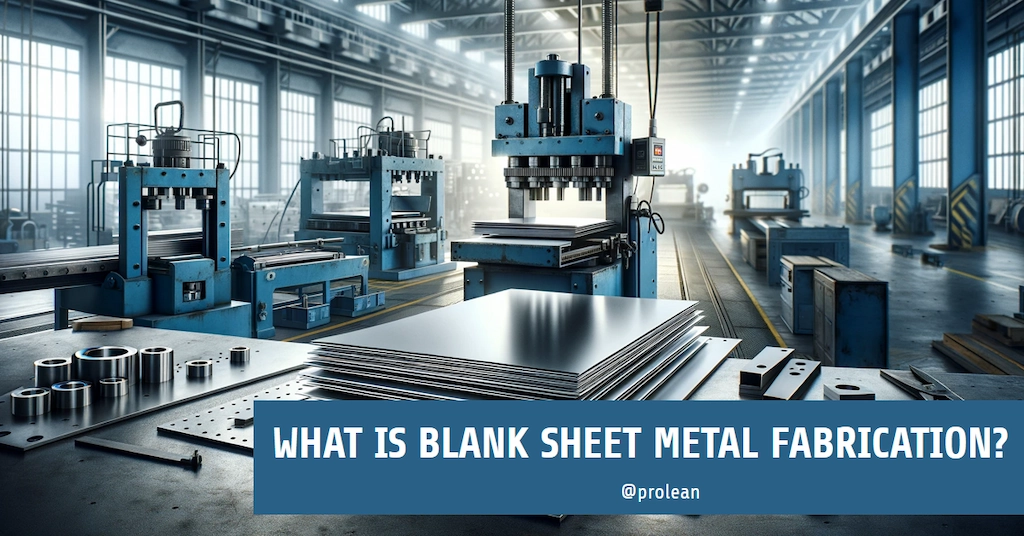
Blank sheet metal fabrication is an intricate process that involves transforming flat metal sheets into various shapes and sizes. At its core, blank sheet metal fabrication is about precision, versatility, and efficiency. The method employs a range of techniques, each suited to specific requirements
This article will discuss the various aspects of blank sheet metal fabrication, from its fundamental processes to the latest advancements, providing a comprehensive understanding of this vital industry practice.
What is Blank Sheet Metal Fabrication?
This technique is central to creating parts and components for various industries like automotive and aerospace. The process starts with blank sheets of metal, typically made of steel, aluminum, or copper. These sheets are manipulated with operations like cutting, sheet metal bending, and assemblies to achieve the desired end product.
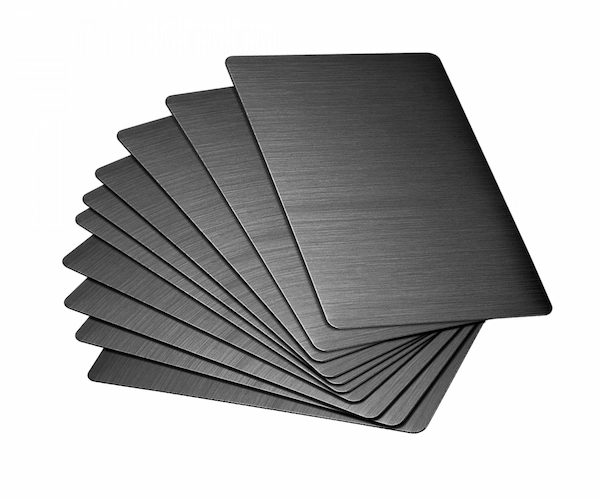
Blank stainless steel sheets
Furthermore, the fabrication process is known for versatility and adaptability. You can use different specialized methods like stamping, welding, and laser cutting based on the project requirements. Meanwhile, each method has its unique advantages and is chosen based on factors like the type of metal, thickness, and the complexity of the design.
Lastly, blank sheet metal fabrication is not just about shaping metal; it’s a blend of art and science. Precision is paramount, as even the slightest error can impact the functionality. Technological advancements, such as computer-aided design and computer-aided manufacturing (CAD and CAM), play a significant role in enhancing the precision and efficiency of the fabrication process.
Read more: What is Sheet Metal Fabrication?
Try Prolean Now!
Cutting Techniques in Blank Sheet Metal Fabrication
Sheet metal fabrication involves various cutting techniques, from traditional methods like shearing to advanced laser cutting. Understanding these different cutting methods is crucial for anyone as it directly impacts quality, efficiency, and cost-effectiveness.
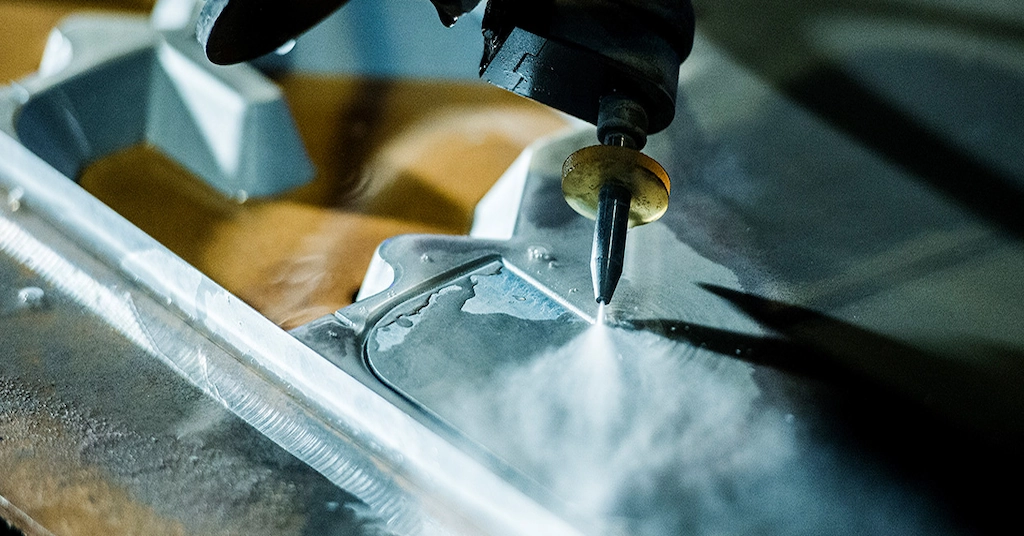
Waterjet cutting on blank sheets
Here are the common sheet metal cutting methods in fabrication:
1. Shearing
It is one of the oldest and most commonly used methods in sheet metal fabrication. It involves cutting straight lines on flat metal stock, typically with a bench shear. However, it’s limited to straight cuts and cannot handle complex shapes or curves. Despite its limitations, shearing is cost-effective and straightforward for projects requiring simple, linear cuts.
2. Punching
Punching is a process where a punch and die create holes or cutouts in sheet metal using press brakes. It creates the shape by placing the metal sheets into the die and pressing with press brakes. It’s particularly efficient for high-volume production runs. However, the quality of the cut depends heavily on the sharpness and condition of the punch and die, requiring regular maintenance.
3. Laser Cutting
Laser cutting uses a high-powered laser beam to melt, burn, or vaporize the metal, allowing for intricate and complex designs. This method is highly accurate and can produce very fine details. CNC Laser cutting is also versatile and capable of cutting various types of metals and thicknesses, and ideal for applications requiring high precision. However, it’s generally more expensive than other methods due to the cost of the equipment and operation.
4. Plasma Cutting
Plasma cutting uses a jet of hot plasma to cut through metal. It’s particularly effective for thicker sheets and is known for its speed and ability to cut through tough materials like stainless steel and aluminum. Meanwhile, It is less precise than laser cutting but more cost-effective for thicker materials.
5. Waterjet Cutting
This technique uses a high-pressure stream of water mixed with an abrasive to cut through metal. This method is unique because it doesn’t generate heat, making it ideal for heat-sensitive materials. Waterjet cutting is highly accurate and can cut through a wide range of thicknesses and types of metals. However, it’s slower and more expensive than some other cutting methods.
5. Sawing
It is a traditional cutting method, often used for cutting thicker metal sheets or bars. While not as precise as laser or waterjet cutting, it is reliable for straight cuts. Meanwhile, band and circular saws are common types.
Bending and Forming Methods for Blank Sheet Metal Fabrication

Blank sheet metal bending
These sheet metal fabrication techniques involve manipulating the metal into various angles and shapes without removing any material. They offer unique capabilities, and the necessary method can be chosen based on factors like the type of metal, desired shape, and precision requirements.
Here is the list of sheet metal bending and forming methods;
1. Manual Bending
It is a fundamental technique often used for simple and small-scale fabrication tasks. It involves using hand tools like hammers and mallets to shape the metal. This method is highly dependent on the skill and experience of the operator. While it allows for higher control and customization, manual bending is less precise than machine-based methods.
2. Press Brake Forming
A press brake machine consists of a punch and a die to create precise bends in the metal sheet. It can produce a wide range of bend angles and is suitable for small to large production runs. The precision and repeatability of press brake forming make it a popular choice for complex projects requiring tight tolerances.
3. Roll Bending
This method is used in fabrication to create curved shapes in blank metal sheets. The process involves passing the metal sheet through a set of rolls, with each pass gradually bending the metal to the desired curvature. Roll bending is ideal for forming large radii and is popular in applications like tank manufacturing and architectural metalwork.
4. Rotary Bending
A precise and efficient method for forming metal without significantly altering its surface. This technique uses a rotary machine where the metal is clamped and then bent using a rotating form. Rotary bending is known for its ability to produce clean, sharp bends with minimal distortion. It’s particularly useful for delicate or surface-sensitive materials.
5. Coining
This method is a high-pressure bending process that permanently deforms the metal, ensuring very accurate bend angles. The metal is placed between a punch and a die, and the press exerts significant force to create the bend. Coining is extremely precise and is often used for parts requiring strict dimensional tolerances. However, it requires more force than other bending methods and may not be suitable for all types of metal.
6. Air Bending
This is a versatile and commonly used bending technique where the metal is only partially in contact with the die. This method requires less force than coining and allows for a wide range of bend angles with a single set of tools. Air bending is less precise than coining but offers greater flexibility in terms of bend angles and is more efficient for varying production runs.
7. Wiping
It is a bending technique where the metal is clamped and then bent over a die edge using a moving tool. This method is effective for creating sharp bends and can be used with various metals. Wiping is often employed for components that require specific bend profiles, such as channels and Z-shapes.
8. Elastomer Bending
Elastomer bending uses a flexible elastomer pad instead of a traditional die. The metal sheet is pressed into the pad, which conforms to the shape of the punch, creating the bend. This method is gentle on the metal surface and is ideal for bending parts with pre-finished surfaces. Elastomer bending is also useful for producing complex bends with minimal tooling.
9. V-Bending
V-bending is a common method where the metal is bent over a V-shaped die. This technique is straightforward and versatile, suitable for a wide range of bend angles and metal thicknesses. V-bending is a staple in many sheet metal fabrication shops due to its simplicity and effectiveness.
What are the Common Materials Used in Blank Sheet Metal Fabrication?
The choice of sheet metal material significantly impacts the fabrication process, influencing factors like cutting and bending techniques, durability, and final application.
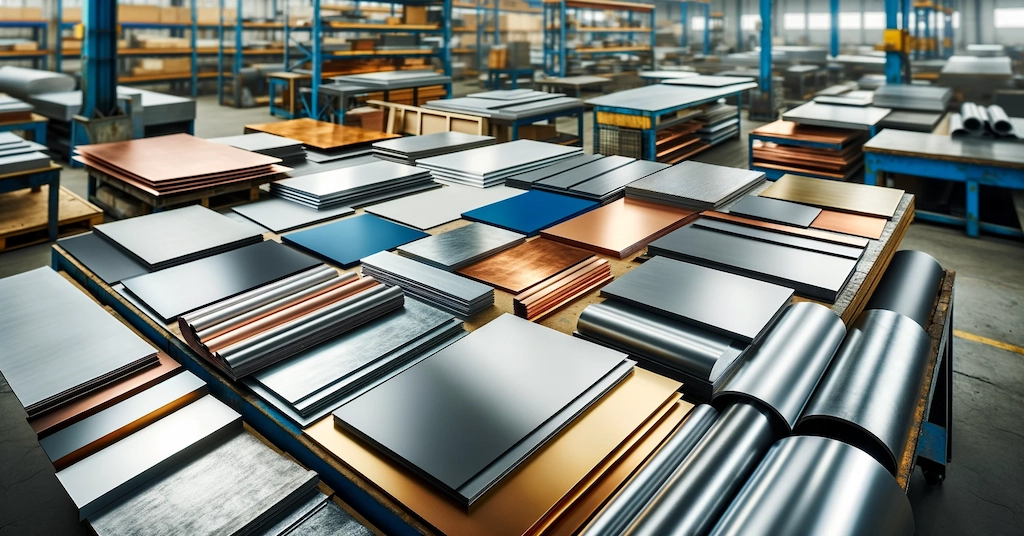
Materials for blank sheet metal fabrication
The blank sheet metal materials range from common metals like steel and aluminum to more specialized options like copper and brass. Meanwhile, each material offers unique characteristics such as corrosion resistance, strength, malleability, and aesthetic appeal.
Common materials include:
- Steel: Known for its strength and versatility.
- Stainless Steel: Offers corrosion resistance and strength. The stainless steel sheet metal fabrication is used in applications requiring strength, corrosion resistance, fatigue strength, and hygiene.
- Aluminum: Lightweight and corrosion-resistant, ideal for aerospace and automotive industries.
- Copper: Highly conductive, commonly used in electrical components.
- Brass: A copper-zinc alloy known for its malleability and acoustic properties.
- Titanium: Strong, lightweight, and corrosion-resistant, used in high-performance sectors.
- Nickel Alloys: Offer high-temperature and corrosion resistance, used in harsh environments.
- Magnesium Alloys: Lightweight and high-strength, often used in automotive applications.
Click here to download: Steps in Blank Sheet Metal Fabrication
Try Prolean Now!
What Are the Applications of Blank Sheet Metal Fabrication?
 Sheet metal parts
Sheet metal parts
This method is crucial in creating parts for sectors from automotive to aerospace, where strength, lightweight nature, and malleability of metals are essential. Additionally, sheet metal finds applications in everyday consumer products, electronics, and construction, demonstrating its broad utility.
Table: Applications of Blank Sheet Metal Fabrication
|
Industry |
Application |
Reason for Use |
|
Automotive |
Body panels, frames, exhaust systems |
Durability, precision, and lightweight |
|
Aerospace |
Common aerospace metal fabrication products are: fuselage components, wing panels |
Strength, lightweight, corrosion resistance |
|
Electronics |
Enclosure for electronics, chassis, heat sinks |
Precision, conductivity, EMI shielding |
|
Consumer Products |
Appliances, furniture, tools |
Customizability, aesthetic appeal, durability |
Blank Sheet Metal Fabrication: Design Tips
Technical drawings in sheet metal fabrication refer to the detailed representations of the final product. It showcases all dimensions, angles, and features. They often include front, side, and top views for complete understanding.
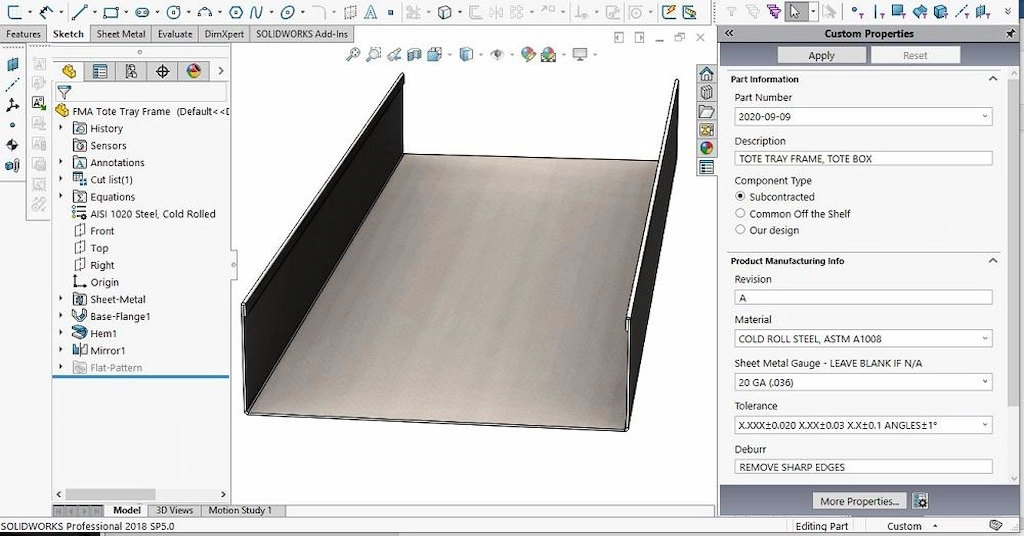
Sheet metal CAD design
Here are some tips to make a blank sheet metal fabrication perfect or fabrication-friendly.
- Measurement Annotations: Precise measurements are crucial in sheet metal fabrication. The guide would include annotations for all dimensions, bend locations, and tolerances to ensure accuracy.
- Material Specifications: Information on the type of metal used, its thickness, grade, and any special treatment required.
- Bend Radius Information: Since bending is a key part of sheet metal fabrication, the guide would provide details on the bend radii, which can vary depending on the type of metal.
- Cutting and Joining Techniques: Suggestions for the most appropriate cutting (like laser or waterjet) and joining (like sheet metal welding or riveting in sheet metal) techniques for the design.
- Finish and Coating Details: If the product requires specific surface finishes or coating, these details are also included, outlining the processes and materials to be used.
Related: The Ultimate Guide to Reading 2D Drawings for Sheet Metal Fabrication
Pros and Cons of Blank Sheet Metal Fabrication
It offers a range of benefits for creating various sheet metal parts and products. However, like any manufacturing process, it also has its limitations. Understanding advantages and drawbacks can help you to make informed decisions and optimize the use of this technology.
Blank Sheet Metal Fabrication Pros
- Sheet metal can be used in diverse industries, from automotive to aerospace, due to its adaptability in forming various shapes and structures.
- Advanced techniques like laser cutting and CNC machining allow precise cuts and bends for complex designs.
- Metals used in fabrication, such as steel and aluminum are suitable for diverse applications.
- Sheet metal fabrication is cost-effective due to the efficiency of the processes and the long-lasting nature of metal products.
- The process allows for high customization, enabling the creation of tailored parts and components to meet specific design requirements.
Blanks Sheet Metal Fabrication Cons
- It is limited to metal and alloys, which may not be suitable for all applications, especially where weight is a concern.
- There is a risk of warping or distortion during processes like cutting and welding. So, it requires careful handling and expertise.
- Some fabrication processes can leave marks or rough edges that may require additional finishing work.
- Design modification is challenging and costly. It requires careful planning and prototyping beforehand.
What is Sheet Metal Blanking?
You might need clarification on sheet metal blanking with blank sheet metal fabrication. Here, these two are distinct processes. The applications of sheet metal blanking include cutting out a specific shape or ‘blank’ from a larger sheet. This process is highly efficient for producing consistent, high-volume parts, particularly in industries where precision and uniformity are paramount.
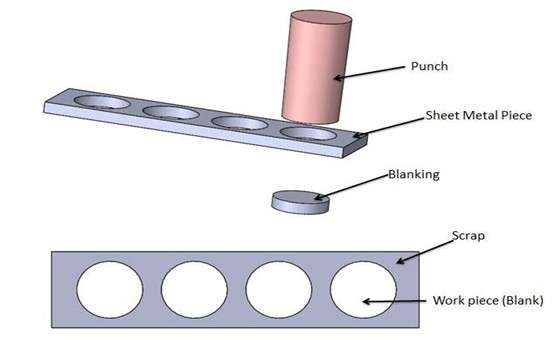
Sheet metal blanking
Blanking involves a die and a press machine; the die has a shape corresponding to the intended part. When the press comes down, sheet metal shearing creates a separate piece or ‘blank’. This method is suitable for its speed and ability to produce clean, precise cuts with minimal waste. You can click here and read an In-Depth Guide to Sheet Metal Blanking to know more about it.
Moreover, the blanking process ensures that the edges of the blanked parts are smooth and free of burrs. It is often combined with other metal-forming processes like bending and stamping to create more complex parts.
Try Prolean Now!
China for Sheet Metal Fabrication: A Viable Option?
China is a global manufacturing hub in the current scenario. It also made China an attractive option for sheet metal fabrication. The country’s vast industrial capacity, skilled workforce, and advanced technology offer numerous services to meet diverse fabrication needs.
Additionally, the cost-effectiveness of China Sheet Metal Fabrication, owing to lower labor and material costs, makes it a compelling choice for businesses looking to optimize their production budgets. The ability to produce large volumes efficiently also caters well to companies seeking to scale their operations.
If you need any sheet metal parts, you can leverage the capabilities of Chinese manufacturers like Prolean. Our commitment to continuous improvement and innovation in practices will enhance the quality of your parts while lowering the cost.
Read more: Benefits of Aluminum Fabrication in Prototyping
Summing Up
The significance of metal fabrication spans various industries, reflecting the versatility and adaptability of metal as a material. It can employ different techniques to convert sheet metal into desired functional parts and products. However, which fabrication technique to use might vary on your requirements and sheet material. Overall, Blank Sheet Metal Fabrication can cater to your manufacturing using the proper fabrication process and techniques.
FAQs
What is Blank Sheet Metal Fabrication?
Blank sheet metal fabrication refers to the transformation of flat metal sheets into various shapes and sizes for different industrial applications.
What are the blank sheet metal fabrication techniques?
Blank sheet metal fabrication techniques encompass various processes, like cutting, bending, and joining. Meanwhile, these include specific methods such as laser cutting, waterjet cutting, press brake forming, roll bending, welding, and riveting.
What are the Common Materials Used in Sheet Metal Fabrication?
The common materials include aluminum, steel, copper, brass, and titanium, each chosen based on specific requirements.
What are the steps of the blanking process?
The blanking process involves designing and creating a die set, which includes a punch and a corresponding die that mirrors the desired shape. Then, the sheet metal is placed between the punch and die, and the press machine applies force, cutting out the part from the sheet metal.
How is Technology Impacting Sheet Metal Fabrication?
Advanced technologies like automation, CAD, and CNC machining are revolutionizing the precision and efficiency of fabrication processes.
Resources
- Trzepieciński, T. (2020). Recent Developments and Trends in Sheet Metal Forming. Metals, 10(6), 779. Retrieved from https://www.mdpi.com/2075-4701/10/6/779
- Vagheesan, S. (2014). Laser cutting process – A Review. Retrieved from https://www.researchgate.net/publication/305385939_Laser_cutting_process_-_A_Review

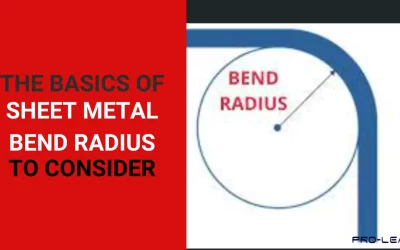
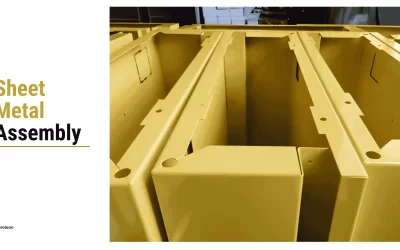
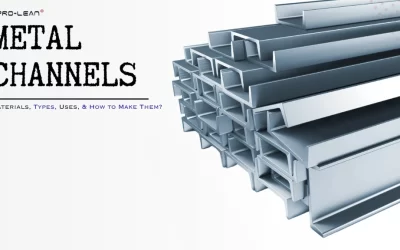
Do you provide custom die and punch for copper blanking to Portugal?
Yes, we do! We have advanced CNC and EDM machining facility to manufacture custom dies for sheet metal blanking. Contact us https://proleantech.com/